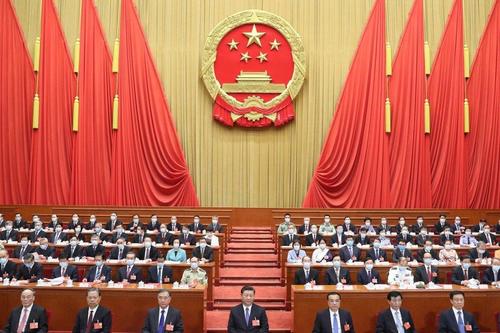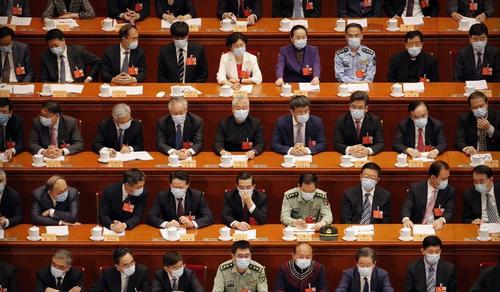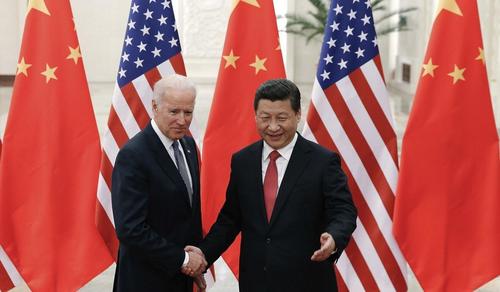“Two Sessions” 2021: 5 Things You Need To Know About China’s Biggest Political Gathering
Authored by Melissa Zhu via The South China Morning Post,
More than 5,000 members of China’s political elite are expected to converge on Beijing in early March for the biggest event on the political calendar.
Known as the “two sessions”, or lianghui, the annual gatherings of the Chinese People’s Political Consultative Conference (CPPCC) and the National People’s Congress (NPC) are a window on the central government’s priorities and plans for the coming year.
This year’s two sessions commence on March 4, and will wrap up on March 11.
The 2021 gatherings of the top advisory and legislative bodies are particularly important because they will mark the start of the next five-year plan and fall in the Communist Party’s centenary year.
Here’s what you need to know:
1. The two meetings are separate affairs
While the CPPCC and NPC meetings take place almost simultaneously and at the same place, they are separate events.
The CPPCC has about 2,200 members from political parties, social groups, professions, various sectors and other organisations.
Its session will get under way on March 4 and members will discuss issues ranging from economics and religion to sport, health and foreign affairs. Various committees will then put together proposals for the government to consider. However, they do not have the power to enact these proposals into law.
This is where the NPC, the country’s top legislature, comes in. Its 3,000 deputies from provinces, autonomous regions and municipalities gather for a full session once a year to vote on and pass important pieces of legislation. This year, they will begin their meetings on March 5.
The NPC is often described as a rubber stamp, serving to officially approve decisions made by other state bodies. The deputies are chosen based on their professional credentials and while some may not have any political affiliations, most are from the ruling Communist Party.
The deputies are selected by legislatures at the provincial, autonomous region and municipal levels and include people from Hong Kong and Macau.
The NPC has never vetoed a party-endorsed plan or work report, although the vote is not always unanimous. The number of opposing votes, however small, is often seen as a sign of the level of disagreement with a government leader or agency.
SCMP Explains: The ‘two sessions’ – China’s most important political meetings of the year
2. Strict Covid-19 control measures will remain in place
Last year, at the height of China’s fight against the coronavirus pandemic, Beijing postponed the two sessions from March to May and imposed strict disease controls on those attending.Beijing has since declared victory over the pandemic, but the country still faces sporadic outbreaks. In January, a cluster of infections about 300km (186 miles) from Beijing resulted in lockdowns in Hebei capital Shijiazhuang and neighbouring Xingtai.Many of the precautions introduced for last year’s two sessions will remain in force for this year’s gathering: only journalists based in Beijing will be allowed to register for the events, most of which will take place online.
The meetings this year will be limited to a week, rather than the usual two weeks or so.
Foreign diplomats who want to attend will also have to take a Covid-19 test and spend a night in quarantine beforehand.
Delegates wearing face masks attend the opening of the third plenary session of the 13th National Committee of the Chinese People’s Political Consultative Conference (CPPCC) in Beijing, China, on 21 May 2020. Photo: EPA-EFE
3. Tech, economic growth and climate change are top of the agenda
One of the NPC’s tasks this year will be to pass the final version of China’s 14th five-year plan, which gives the leadership a chance to outline longer-term priorities that could define President Xi Jinping’s legacy and the party’s future.Notably, the latest five-year plan will be the first to dedicate a specific chapter to technology, framing self-sufficiency in technology as a major pillar of China’s economic development and marking a shift in priorities towards industrial and national security as well as reduced tech imports.Technology is one of the most contentious areas in Beijing’s relationship with Washington and a field that China sees as critical to its drive for modernisation and self-reliance over the next decade and a half.The outlines of the five-year plan published in November indicate that China intends to boost domestic consumer demand and encourage self-reliance in the hi-tech sector, as part of its so-called dual circulation strategy.
Xi signalled this shift towards the domestic sector late last year, telling a party meeting that the country had managed to “turn danger into safety” in response to multiple external risks by focusing on its own businesses.
SCMP Explains: China’s five-year plans that map out the government priorities for development
NPC deputies are expected to cut both the budget deficit and the issuance of local special purpose bonds used to fund infrastructure spending, while increasing the budget for livelihood-related projects, according to analysts.Observers will also be watching for signs of how the country intends to achieve net zero carbon dioxide emissions within the next four decades.
4. It’s a big year for China and the Communist Party
This year’s political set piece will take on extra political weight for the president as the Communist Party gears up to celebrate its centenary in July.
Xi has signalled his confidence that the party and country are on the right track by telling senior officials in January that “time and momentum are on our side”.
However, he warned that the country faced “unprecedented challenges and opportunities”, telling the Politburo they must “create favourable social conditions” for the anniversary.
Coverage of the two sessions is therefore likely to be especially sensitive: Public Security Minister Zhao Kezhi told police chiefs to regard any challenges to the authorities – including online – as “battlefields” on which they must be ready to fight ahead of the July celebrations.Aside from the 14th five-year plan, Beijing’s leadership will also unveil its longer-term “ 2035 vision” at the two sessions this year. This will be a blueprint for the next 15 years, harking back to the start of the era of reform and opening up under Deng Xiaoping four decades ago.
5. International relations will be at play
China is looking to reset relations with the United States after four years of rapid deterioration under former US president Donald Trump.
But Joe Biden has made it clear that he expects “extreme competition” between the two countries, and his team is expected to continue a hard approach to China, albeit in greater consultation with US allies.
Chinese President Xi Jinping, right, shakes hands with then-US Vice-President Joe Biden as they pose for photos at the Great Hall of the People in Beijing in 2013. Photo: AP
Early signals from the Biden administration also reflect a focus on human rights in the relationship with China, so the presence at the two sessions of senior officials sanctioned for their actions in Xinjiang and Hong Kong may be a reminder of some of Beijing’s domestic policies that have caused growing international alarm.
Accusations that China mishandled the start of the pandemic – combined with issues such as Taiwan, the South China Sea and the prolonged border stand-off with India – have further damaged its image on the world stage.
China is likely to be particularly careful about its political messaging as any further international backlash could threaten its economic plans.
Tyler Durden
Wed, 03/03/2021 – 23:40
via ZeroHedge News https://ift.tt/3c3yCfo Tyler Durden


